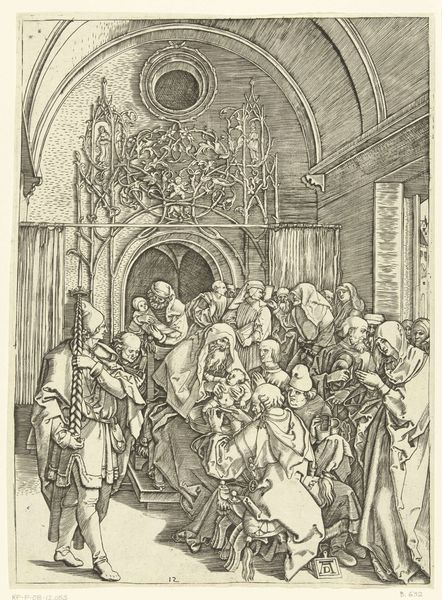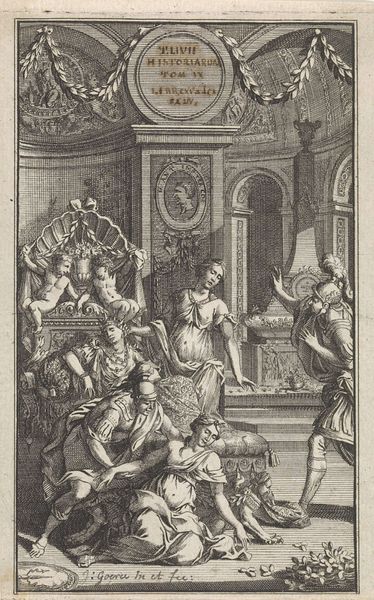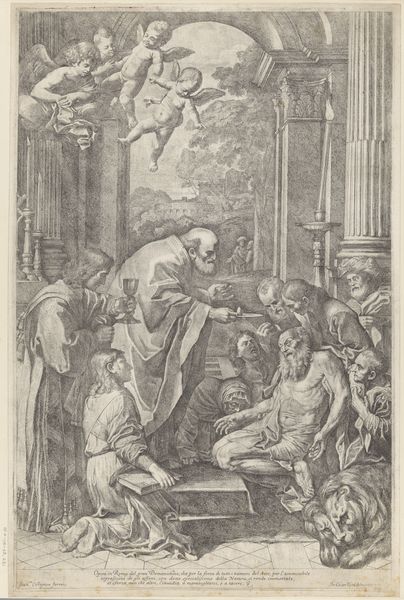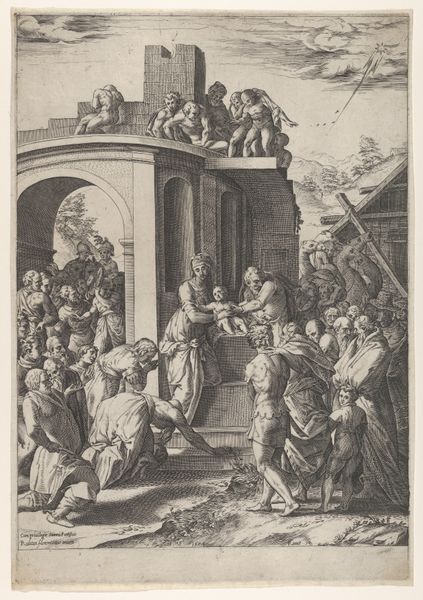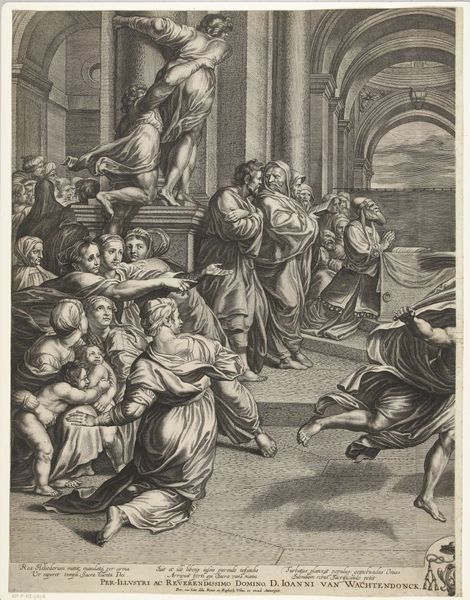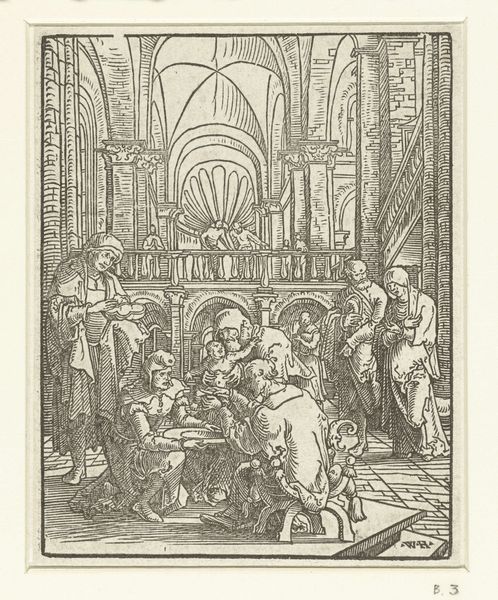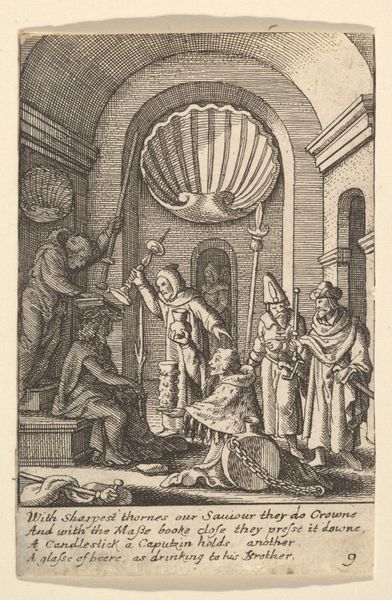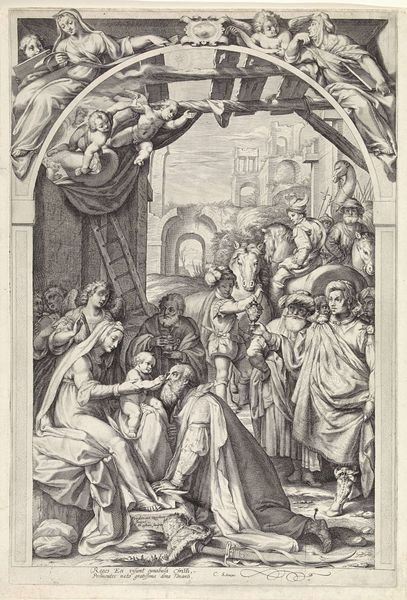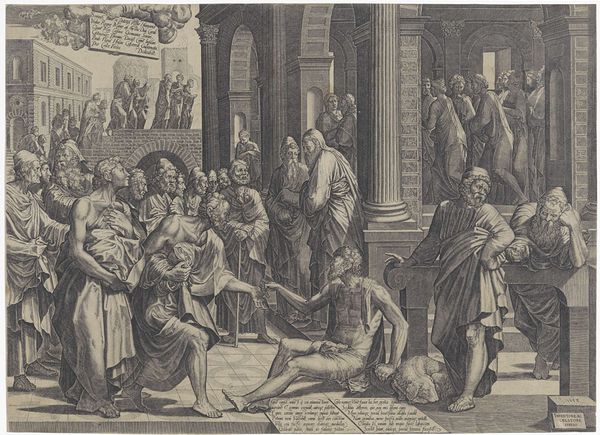
The Miracles of Saint Ignatius of Loyola 1628 - 1677
0:00
0:00
drawing, print, etching, engraving
#
drawing
#
baroque
# print
#
etching
#
figuration
#
pencil drawing
#
history-painting
#
engraving
Dimensions: Sheet (Trimmed): 5 1/4 × 3 9/16 in. (13.4 × 9.1 cm)
Copyright: Public Domain
Curator: At first glance, this piece strikes me as chaotic and dramatically unsettling. The bodies in the foreground seem caught in a moment of extreme distress. Editor: Indeed. What you're seeing is "The Miracles of Saint Ignatius of Loyola," an etching by Theodor van Merlen II dating roughly from 1628 to 1677. Look closely; you'll notice that it is composed of a very intricate, detailed linear network. Curator: Yes, that detail is quite fascinating, especially when considering its social function during the Baroque era. This detailed execution speaks volumes about the cultural memory surrounding sainthood. The almost theatrical suffering feels deliberately constructed to inspire a very specific emotional response. It’s interesting how such emotional display carries such weight through visual symbol over time. Editor: For me, the visual cacophony belies the incredible amount of labor, craft and, well, chemistry it takes to create a print like this. Just consider the plates used for etching and engraving – the selection and preparation of those materials alone tells a story of specialized trades, workshops and networks of exchange in 17th-century Europe. We see only the final "art" product, yet that is built upon countless labor hours! Curator: A worthwhile consideration! The placement of Ignatius at the elevated rear emphasizes his divine power over the tumultuous humanity in the foreground. It suggests an almost transactional exchange: faith in exchange for deliverance. That exchange carries significant meaning that impacts Baroque society. Editor: That is quite right! These historical, religious, and hierarchical structures influence not only artistic creation but social reality too. Van Merlen carefully selected lines and their material arrangement on a copper plate. Etching as reproductive method allowed mass dissemination and thus propagation of Loyola's narrative throughout society... not that far from today's image culture! Curator: A point well taken! It forces us to acknowledge the power that printed images and symbols have to propagate societal change. Editor: Yes, exactly. We get lost in the symbolic or "spiritual," forgetting this Baroque image, first and foremost, represents a complex interaction of material process, labor, and ultimately social production and circulation of printed matter in the 17th century. A lot to consider for our next visit!
Comments
No comments
Be the first to comment and join the conversation on the ultimate creative platform.
